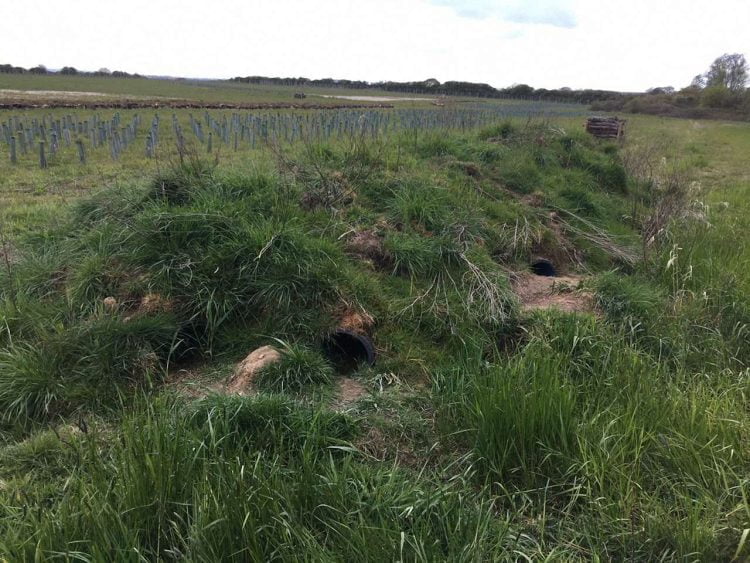East West Rail is an ongoing project to reconnect Oxford with Cambridge by rail.
Stage One is currently being built by Network Rail and the East West Rail Alliance between Oxford, Bletchley, and Milton Keynes.
The first phase of this stage, between Oxford and Bicester, was completed in 2015. Construction is currently underway on the second phase between Bicester, Bletchley, and Milton Keynes.
A planning condition in the Transport and Works Act Order required that the construction of the section between Bicester, Bletchley, and Milton Keynes should deliver a 10% net gain in biodiversity. It is the first time that a major rail infrastructure project has committed to achieving such a target.

Since 2018, East West Rail has been working with Natural England to test their Biodiversity Metric as it has been developed. The latest version of the metric (Version 3.0) was released in July 2021, and that is currently being assessed for how the final construction position accords with that.
In a first for a major rail infrastructure project, plans for the construction of the Bicester to Milton Keynes section had a commitment that any habitats disrupted during construction should be restored, and that an additional 10% should be created so that wildlife, trees, and plants can thrive in the future.
In accordance with that commitment, over 150,000 trees have already been planted. This work also complies with a major aim of COP26 summit by protecting the natural environment and contributing to the conservation of nature.
Mark Cuzner, East West Rail Alliance project director, said: “We've been committed to having the smallest ecological impact possible while building this exciting new railway which will one day link Cambridge and Oxford from East to West.
“As this phase of East West Rail is being built in the main on mothballed railway lines which had become important wildlife corridors, we had to think sensitively and carefully about how we could protect species which had made their home on the former railway lines. That's why we made a railway first commitment to put back 10% more habitat as part of the project, and it's really encouraging to see how this is already paying off for biodiversity along the route.”
Ian Parker, EWR Co programme delivery director, said: “Protecting the environment is at the centre of everything we do, and a fundamental part of our decision-making. We'll build on the great work that's already underway on delivering biodiversity net gain for the section of railway between Bicester and Bletchley/Milton Keynes, and continue to work closely with local community groups, environmental bodies and local highway and planning authorities to keep a sharp focus on priority habitats and the natural environment as we continue with our designs for the whole railway.”
To date, 100 hectares of new habitats over 20 different sites have been created, and 150,000 trees have been planted. Species relocated and protected include otters, badgers, bats, butterflies, reptiles, and amphibians, including great crested newts.
Ecological compensation sites that have been created are maturing well, with East West Rail Alliance ecologists closely monitoring their progress. Successes so far include:
- 100% of the 27 artificial badger setts constructed have been occupied by badgers;
- 22% of the artificial badger setts have already been used for breeding;
- a purpose-built bat house is being used by roosting bats;
- at least seven species of bats are using the sites for commuting and feeding;
- 100% of the ponds created for great crested newts show signs they are living there;
- one of two artificial otter holts is regularly being used.
Where Next on RailAdvent?
Subscribe for More
Railway News
DVDs, Prints, Cards, Gifts and more
MAINLINE STEAM INFO
Competition Time!
COMMUNITY PHOTOS
FREE NEWSLETTERS